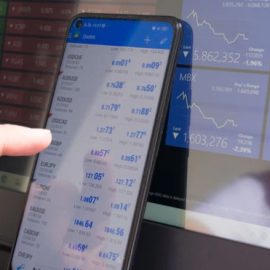

This article is an excerpt from the Shortform book guide to "Your Money or Your Life" by Vicki Robin and Joe Dominguez. Shortform has the world's best summaries and analyses of books you should be reading.
Like this article? Sign up for a free trial here .
What are some creative ways to build savings? Do you know how to let your money work for you?
Building savings and letting your money work for you are two key aspects to achieving financial security and independence. Learn two creative methods to build savings and three practical ways to let your money work for you.
Read more to learn more about these paths to financial security.
The Power of Savings
When you embody frugal living, you learn to find ways to enjoy more and spend less without relying on the transactional (money-based) economy for needs or fulfillment. Instead, you grow your participation in the relational economy—meeting your needs through cultivating your abilities and community. This is called financial interdependence: money-free wealth that you both give and benefit from.
Building Savings Through Skills
As the economy fluctuates, different skills are in demand at different times. Growing your skills and abilities is a great way to save money because you can get things for yourself and do things for others while paying little to nothing. Plus, it allows you to weather the changing market and gives you paid employment options to fall back on, if you need them.
Some skills include:
- DIY repair or construction
- Cooking
- Marketing
Building Savings Through Community
If we have little to no meaningful familial or social life, it’s easy to feel lonely and disconnected.
Developing close family relationships and friendships in which you give and receive helps you avoid loneliness by generating a suite of people to support you and vice versa. This is known as social capital. It also helps you build savings by relying more on people and less on things to meet your needs.
Some examples of building your community include:
- Joining social communities like churches or book groups
- Making amends with friends or family
- Singing in a choir
- Running for county council
Letting Your Money Work for You
Learn key terms and the basics of how to invest your savings to reach financial independence by building a cushion and investing your capital.
1. Cushion
The first stop for your savings is your Cushion: the readily available cash that lets you weather financial hardship. You’ll keep this money in a savings account, aiming to build it to cover six months of expenses. If you find yourself out of work, you’ll have this cushion to fall back on.
2. Capital
Savings you don’t need to spend in the short-term is your capital: money you can invest to generate passive income. Unlike your cushion, you won’t keep your capital in a bank account. You’ll invest it so that it grows over time.
3. Compound Interest
Getting your capital to make money for you is one of the keys to reaching financial independence. Investing in bonds or other investment instruments allows capital to accrue compound interest—money that the investment instrument adds to your invested capital.
You can use the following formula to calculate how much interest your savings will accrue each month: monthly investment income = capital x current interest rate divided by 12.
Example: Your first month, you have $100 in capital. The current interest rate is 4 percent. The formula would look like this: monthly investment income = $100 x 4% divided by twelve = $0.33 per month.
In one year, you’d earn $4 in interest ($0.33 x 12) for a total of $104 (your initial investment plus your interest). If you reinvested that a second year, you’d earn $4.16 for a total of $108.16. And so on.
Compound interest exponentially builds savings because it works on both the initial investment and the interest accrued.
Your Crossover Point
When you have more monthly investment income than expenses, this is your crossover point: when you no longer need to work for money and have reached financial independence.
Building savings and letting your money work for you are crucial steps as you work toward financial security and freedom.

———End of Preview———
Like what you just read? Read the rest of the world's best book summary and analysis of Vicki Robin and Joe Dominguez's "Your Money or Your Life" at Shortform .
Here's what you'll find in our full Your Money or Your Life summary :
- The 9 steps to reach financial independence
- How to change your entire relationship with money and live a more meaningful life
- How to align your spending habits with your values, purpose, and dreams






